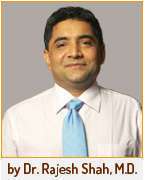
Homeopathic Treatment for G6PD
G6PD is an enzyme called glucose-6-phosphate-dehydrogenase. An insufficient amount of this enzyme is termed G6PD deficiency. Though the disease is rarely fatal, it causes a spectrum of complaints like jaundice in the newborn as well as an acute and chronic breakdown of red blood cells. This condition is prevalent throughout the Mediterranean, the African, Asian and Middle East countries. This is the most common enzyme deficiency in the world. 400 million people worldwide are affected by this enzyme disorder.
What is the G6PD deficiency?
G6PD is a genetic, X-linked, metabolic disorder, passed on from mother to mostly the male child (females are usually healthy carriers of the gene defect). G6PD is an enzyme that keeps the red blood cells (RBCs) healthy and plays an important role in oxidizing processes. A deficiency can lead to the sudden destruction of red blood cells.
Being a genetic disorder, there are more than 300 variants of this condition. The symptoms vary in their severity in different people according to the variant form of the genetic defect. G6PD plays an important role in the production of a chemical - glutathione. This chemical antioxidant is essential for maintaining the integrity of the cell walls of the RBCs.
Hemoglobin is the oxygen-carrying protein in the blood. It is a major component of all red blood cells and gives them their red color. This protein picks up oxygen from the lungs, carries it throughout the body and delivers it to all your cells. In addition, hemoglobin also picks up some of the carbon dioxide produced by the cells and transports it to the lungs from where it is exhaled out.
Cells need oxygen for their basic functions and to keep them alive. Hence, without enough red blood cells to transport oxygen to your cells and carbon dioxide away from your cells, it is like literally suffocating every tissue and organ system in the body. When glutathione levels are very low, the hemoglobin in the RBCs is unable to bind with oxygen. This breaks down the cell wall, spilling out all its contents.
Symptoms of G6PD deficiency
Most forms of G6PD are mild and do not have any symptoms. Symptoms develop when people are either exposed to certain foods or drugs (fava beans; sulpha-drugs and particularly those drugs having '-quine' at the end of their names), or when the person is severely ill, or when exposed to noxious substances.
Symptoms develop when the rapid breakdown of RBCs occurs.
Some symptoms seen are:
- Fatigue
- Appearing very pale
- Sudden rise in body temperature
- A headache
- Dizziness
- Rapid heartbeats
- Shortness of breath
- Pain in the back or abdomen
- Urine appears very dark, red, red-brown, brownish or tea colored
- Yellow coloring of the eyes and skin (jaundice)
- Spleen may be enlarged
The symptoms usually disappear when the offending food or drug is stopped.
Infants with G6PD deficiency can present with prolonged jaundice anywhere around days 1-4 after birth.
When to meet the physician?
You need to immediately meet up with your physician if:
- You experience severe exhaustion or pale skin or any of the persisting symptoms become worse.
- Your urine appears very dark, red, red-brown, brownish or tea colored.
- Your urine output has noticeably reduced recently.
Diagnosis of G6PD deficiency
When any of the above-mentioned symptoms present themselves in a person of ethnic groups susceptible to the condition then, G6PD deficiency is suspected. In children, most cases go undetected until the child develops a health problem.
Some laboratory investigations asked for are:
- Complete blood count: active G6PD shows the presence of "Heinz bodies" (protein aggregates) within the red blood cells.
- Liver Function Tests: done to rule out other causes of liver damage and jaundice.
- Coomb's Test: to check for the presence of direct antiglobulin. The results should ideally be negative as RBC breakdown isn't an auto-immune condition.
- Haptoglobin: reduced in RBC breakdown (hemolysis).
- Beutler Fluorescent spot test: The conversion of nicotinamide adenine dinucleotide phosphate (NADP) to its reduced form in RBCs is the basis of diagnostic testing for the deficiency.
Treatment of G6PD deficiency
For the majority of people affected, treatment of G6PD is as simple as avoiding the triggering agent. Severely ill children may need hospitalization, oxygen support, and intravenous fluids.
It is important to avoid the foods and drugs below.
- Antibiotics (Sulphonamides, Co-trimoxazole (Bactrim, Septrin), Dapsone, Chloramphenicol, Nitrofurantoin, Nalidixic acid)
- Antimalarials (Chloroquine, Hydroxychloroquine, Primaquine, Quinine, Mepacrine)
- Chemicals (Moth Balls, naphthalene, Methylene blue)
- Foods (Fava beans - also called broad beans)
- Other drugs (Aspirin, Phenacetin, Sulphasalazine, Methyldopa, Large doses of vitamin C, Hydralazine, Procainamide, Quinidine, Some anti-cancer drugs)
Written & Approved by-
Dr. Rajesh Shah
M.D. (Hom.)